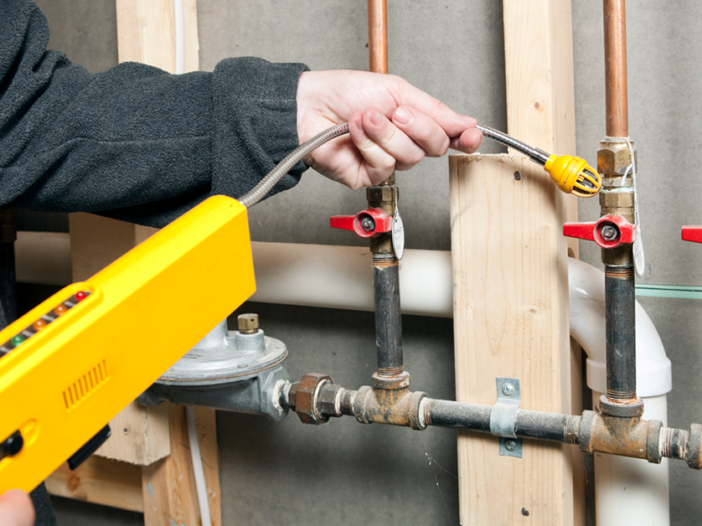
The Silent Killer: Prevent Carbon Monoxide Poisoning
Humans tend to rely on their senses to perceive danger. As such, the most menacing threats are usually those that are hardest to detect. Carbon monoxide gas is a prime example of this, as it is not only highly toxic, but also virtually undetectable. It is colorless, so it cannot be seen; it is soundless, so it cannot be heard; it is odorless, so it cannot be smelled or tasted; and it is formless, so it cannot be touched. As a result, those who are exposed to dangerous levels of carbon monoxide may not even realize it until it’s too late. Prevent carbon monoxide poisoning at your facilities by conducting proper maintenance, developing safety procedures and educating tribal employees on carbon monoxide risks, warning signs and response.
What is carbon monoxide?
Carbon monoxide, or CO, is a chemical compound that can be a byproduct of thermal combustion. Common sources include gas-operated generators, power tools, compressors, pumps, welding equipment, space heaters and furnaces, as well as vehicles equipped with internal combustion engines. These common sources mean that most people encounter CO to some degree on a regular basis. However, CO exposure can become a hazard when:
- Fuel or other materials containing carbon, such as natural gas, gasoline, kerosene, oil, propane, coal or wood, are burned inefficiently
- Flues, air intakes or vents that regulate CO output become blocked, causing toxic buildup
- Equipment that produces CO is used indoors, in enclosed spaces or in poorly ventilated areas
The risk of CO buildup can also increase in colder months when employees take their work indoors to escape from the cold, or if ventilation becomes blocked by snow and ice.
Related: Confined space safety tips for tribal employees
Why is carbon monoxide so dangerous?
When we breathe, oxygen enters our system through the lungs and pairs up with hemoglobin, which transports it through the bloodstream. CO also has the ability to pair with hemoglobin, and at exponentially faster rates. Therefore, if a high-enough concentration of CO is inhaled, hemoglobin receptors will immediately be blocked from pairing with oxygen. The respiratory system will then swiftly become flooded with CO instead of oxygen, causing suffocation and other complications to set in rapidly.
One way to prevent carbon monoxide poisoning is to ensure your workforce can recognize the signs and symptoms of exposure. Since carbon monoxide is so difficult to detect through the senses, signs and symptoms are one of the only tangible indicators of carbon monoxide toxicity, barring the aid of a mechanical alarm or detector.
Warning signs:
- Chest tightness
- Headache
- Fatigue
- Dizziness
- Drowsiness
- Nausea
Prolonged exposure:
- Warning signs may worsen
- Vomiting
- Confusion
- Collapse
- Loss of consciousness
- Muscle weakness
Severe exposure:
- Convulsions
- Coma
- Capillary hemorrhaging
- Permanent damage of nerve tissues and brain cells
- Death
Depending on the situation, this progression of symptoms can take hours or mere minutes. Vulnerable individuals such as babies and children, elderly, those with lung or heart disease or those living at high altitudes. Those who already have elevated CO blood levels, such as smokers, may succumb to exposure even more quickly.
Depending on the length and severity of the exposure, even those who are rescued and recover still may suffer permanent effects such as nerve, brain or heart damage. This means that when it comes to preventing carbon monoxide poisoning, catching it in time is everything.
Related: Access this safety training solution to hone your team
How to respond
Take the following steps if you believe yourself or others are suffering from CO poisoning. Remember, time is of the essence, so encourage your employees to take swift and decisive action if they suspect carbon monoxide poisoning.
- Immediately evacuate yourself and others from the affected area
- Immediately relocate victims to fresh air in an open area
- Call 911 or another local emergency number for medical assistance
- Stay on the line and follow all directions from emergency responders
Remember, evacuating victims to an unaffected area is a vital first step, both to stop the damage the victim is experiencing, as well as to prevent responders from succumbing to poisoning themselves.
Related: Safety Leadership: The Ultimate Risk Management Strategy
Ways to prevent carbon monoxide poisoning
- Regularly maintain all equipment and appliances that can produce CO.
- Install ventilation systems in areas that may be susceptible to CO buildup.
- Regularly maintain all air intakes, flues and vents.
- Install CO detectors equipped with alarms in all facilities and train employees in proper response procedures if it is triggered.
- Consider potential alternatives for any indoor equipment or appliances that produce CO.
- Prohibit the use of equipment or tools that produce CO in enclosed or poorly ventilated areas (for instance, simply opening doors and windows is not a guarantee of sufficient ventilation).
- Consider providing personal CO monitors to employees at high risk for poisoning (see OSHA Fact Sheet for a list of high-risk occupations) or for those that frequently use equipment or appliances that produce CO.
- Educate workers about the causes, symptoms, and response to CO poisoning and exposure.
- Train employees to:
- Recognize and report situations that might cause CO accumulation.
- Recognize and report air circulation and ventilation problems.
- Know the dangers of using gas-powered tools or equipment indoors or in enclosed spaces and find alternatives whenever possible.
- Recognize and report CO poisoning warning signs (dizziness, drowsiness, nausea, etc.).
Since carbon monoxide is so difficult to detect, awareness and education is one of the most effective ways to prevent carbon monoxide poisoning injuries among your workforce. If you have any questions regarding this material, please contact your broker or tribal risk manager.
Resources:
Communications Workers of America: Carbon Monoxide and the Workplace
